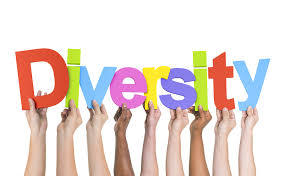“The way we learn is as unique as our fingerprints.” CAST
Students are intelligent in a number of ways, and there is no “one-size-fits-all” when it comes to learning and teaching. As educators, our job is to meet the needs of all of our students, not just a select few. That is why it is important to consider diversity when looking at our schools and classrooms. We are obligated to ask ourselves what we are doing to ensure all of our unique students get a fair chance to learn.
As English teachers abroad, some teachers tend to see their classrooms as a group of similar students. “They are all Costa Rican. They are all teenagers. They are all…” However, all students possess ethnically diverse cultural knowledge, prior experiences and frames of references that influence how they interpret curriculum and classroom experiences.
Diversity is physical and personality characteristics, beliefs, or experiences that can make a person both unique and similar to others. Diversity can include but is not limited to race, ethnicity, gender, sexual orientation, language, culture, religion, mental and physical ability, social class, and even immigration status (Diversity Toolkit Introduction).
It is our job is to consider all of the aspects and differentiate our instruction to meet these unique needs. This means we need to ensure that the content, processes and products of the class are aligned with goals and objectives for all students based on their abilities to comprehend (Darrow). We also must implement culturally relevant and responsive teaching in order to make learning more relevant and effective for our students. We want our students to feel respected and honored in who they are and validated in how they learn regardless of differences.
Our students need to be exposed to thought processes, experiences and ideas that both mirror and oppose their own (Chita-Tegmark et al). We should see the value in using appropriate materials that provide multiple views and experiences to both enlighten and empower students of all backgrounds. As Tu (1999) discussed, using materials that students can relate to lets them know that they are not alone and opens dialogues between students and teachers. We can also expose our students to a variety of texts, videos or audios that challenge stereotypes and our students’ current thoughts in order to make them more aware of other perspectives in addition to better understanding themselves. These tools should be culturally scaffolded and create a community that views differences as strengths and resources.
By being deliberate in this planning and selection of materials, we can create a classroom and school environment that encourages fairness and creates skills our students need to function as members of society. As leaders who promote culturally relevant school culture, we need to accept the complexities of our student population and not reduce our students to stereotypes or make assumptions (Fraise & Brooks). By focusing on academic and non-academic success and helping students understand themselves, we are creating leaders.
Teachers can directly shape the learning environment and academic outcomes of our English learners by having a positive attitude regarding diversity. It is vital that we are knowledgeable about the cultures of our students and not only embrace, but celebrate, the differences. We are responsible for bridging the cultural differences and have high expectations for all of our learners. Many of our learners, if not all, have faced adversity in their lives and deserve to be believed in and encouraged to their full potential.
Want to learn more about meeting your diverse students’ needs? Sign up TODAY for a seat in one of our 4-week TEFL course in Costa RIca!
 CAST. (2010). UDL at a Glance. https://www.youtube.com/watch?v=bDvKnY0g6e4&feature=youtu.be
CAST. (2010). UDL at a Glance. https://www.youtube.com/watch?v=bDvKnY0g6e4&feature=youtu.be
Chita-Tegmark, Gravel, Serpa, Domings, Rose. (2012). Using the universal design for learning framework to support culturally diverse learners. Journal of Education.
Darrow. (2015). Differentiated instruction for students with disabilities: Using DI in the music classroom. General Music Today.
Fraise & Brooks. (2015). Toward a theory of culturally relevant leadership for school-community culture. International Journal of Multicultural Education.

